Introduction to Trigonometry
Trigonometry (from Greek trigonon "triangle" + metron "measure")
Want to learn Trigonometry? Here is a quick summary.
Follow the links for more, or go to Trigonometry Index
Follow the links for more, or go to Trigonometry Index
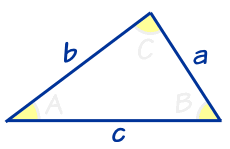 | Trigonometry ... is all about triangles. |
Trigonometry also helps with circles, finding angles and distances in many shapes, coding in video games, and more!
Right Angled Triangle
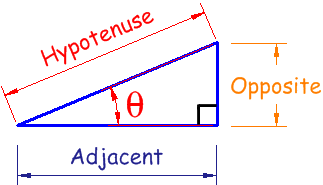
The triangle of most interest is the right-angled triangle.
The right angle is shown by the little box in the corner.
We usually know another angle θ.
And we give names to each side:
- Adjacent is adjacent (next to) to the angle θ
- Opposite is opposite the angle θ
- the longest side is the Hypotenuse
Sine, Cosine and Tangent
Trigonometry can often find a missing side or angle in a triangle.
The special functions Sine, Cosine and Tangent help us!
They are simply one side of a right-angled triangle divided by another.
For any angle "θ":
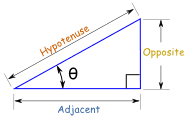
Sine Function:
| sin(θ) = Opposite / Hypotenuse |
Cosine Function:
| cos(θ) = Adjacent / Hypotenuse |
Tangent Function:
| tan(θ) = Opposite / Adjacent |
(Sine, Cosine and Tangent are often abbreviated to sin, cos and tan.)
Calculators have sin, cos and tan, let's see how to use them:
Try Sin Cos and Tan!
Move the mouse around to see how different angles affect sine, cosine and tangent:
Notice that the sides can be positive or negative by the rules of Cartesian coordinates. This makes the sine, cosine and tangent change between positive and negative also.
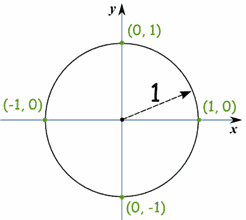
Unit Circle
What you just played with is the Unit Circle.
It is a circle with a radius of 1 with its center at 0.
Because the radius is 1, we can directly measure sine, cosine and tangent.
Here we see the sine function being made by the unit circle:
© 2015 MathsIsFun.com v 0.81
And now you know why trigonometry is also about circles!
Note: you can see the nice graphs made by sine, cosine and tangent.
Degrees and Radians
| Angle | Degrees | Radians |
|---|---|---|
| 90° | π/2 | |
| __ Straight Angle | 180° | π |
| 360° | 2π |
Repeating Pattern
Because the angle is rotating around and around the circle the Sine, Cosine and Tangent functions repeat once every full rotation (see Amplitude, Period, Phase Shift and Frequency).
When we want to calculate the function for an angle larger than a full rotation of 360° (2π radians) we subtract as many full rotations as needed to bring it back below 360° (2π radians):
And when the angle is less than zero, just add full rotations.
Solving Triangles
A big part of Trigonometry is Solving Triangles. "Solving" means finding missing sides and angles.
We can also find missing side lengths. The general rule is:
When we know any 3 of the sides or angles we can find the other 3
(except for the three angles case)
(except for the three angles case)
See Solving Triangles for more details.
Other Functions (Cotangent, Secant, Cosecant)
Similar to Sine, Cosine and Tangent, there are three other trigonometric functions which are made by dividing one side by another:

Cosecant Function:
| csc(θ) = Hypotenuse / Opposite |
Secant Function:
| sec(θ) = Hypotenuse / Adjacent |
Cotangent Function:
| cot(θ) = Adjacent / Opposite |
Trigonometric and Triangle Identities
And as you get better at Trigonometry you can learn these:
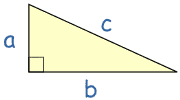 | The Trigonometric Identities are equations that are true for all right-angled triangles. |
 | The Triangle Identities are equations that are true for all triangles (they don't have to have a right angle). |
Enjoy becoming a triangle (and circle) expert!
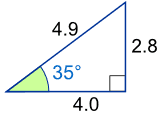
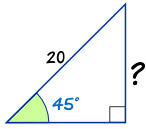

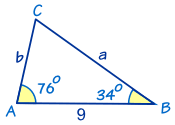

افضل شركة تسليك مجاري بالجبيل
ReplyDeleteافضل شركة تسليك مجاري بالقطيف
افضل شركة عزل اسطح بالاحساء
افضل شركة عزل اسطح بالدمام
افضل شركة عزل اسطح بالجبيل